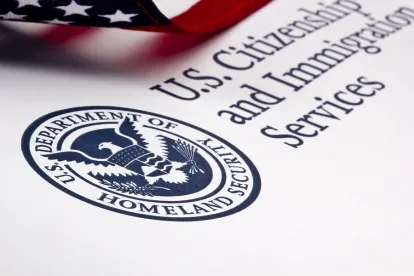We commented on all those public announcements about H-1B’s in our blog of April 5, 2017, skeptical as to whether they indicated that the program would really be restructured. Then on April 18, the President issued his Executive Order: Buy American and Hire American. The prior agency announcements coupled with this Executive Order have created a lot of confusion, misunderstanding, and fear, so much so, that many non-immigrants in the United States sincerely believe that their days in the United States are numbered. In fact, this is not the case. It is time to address how the state of affairs came to be and what the actual reality is.
Question: Announcements by government officials and reports in the press seem to indicate that the U.S. work visas, as we know them, particularly the H-1B visa are under attack and may soon be history. Is this true?
Both supporters of the Administration, and its opponents will agree that a significant element of the announced initiatives is to disrupt the status quo and shake things up. Within the context of “legal immigration” there has been an attempt to draw attention to, and successfully so, to the issue of compliance with warnings not to abuse the system to the disadvantage of American Workers. To assure maximum impact as to these announcements, and statements, they were timed to correspond with the massive filing of new H-1B cases (cap cases) that takes place at the beginning of April every year. However, the pre-existing process in place for selection of H-1 cap cases and their adjudication remained unchanged this year and, in fact, less petitions were filed. Accordingly, a higher percentage of beneficiaries will be selected for adjudication this year. In a certain sense, “the disruption strategy” may have already been, from the perspective of the administration a success by discouraging petitioners from filing. But for those who participated, there is a better chance for success!
Question: Isn’t true however that there have been a number of announcements as to enforcement initiatives with reference to H-1B petitions? Isn’t this, a significant change?
In fact, the announcements made at the beginning of April by the Department of Justice, the Department of Homeland Security [United States Citizenship & Immigration Services], and the Department of Labor made no substantive changes in law, procedure, or process. The agencies publicized the importance of insuring that companies do not abuse the H-1B system by hiring foreign nationals to replace Americans and encouraged all parties to report any abuse that they see through a hotline or email addresses which were already in existence previously.
Question: Didn’t USCIS, as an attack on the H-1 process, suspend “Premium Processing” [a procedure for expedited processing of H-1 petitions] at the beginning of March?
In fact, this was a strictly operational decision which was being discussed at a management level within USCIS for many months to address problems with reference to workload capacity. USCIS reluctantly chose to forego millions of dollars in filing fees, concluding that they would not have the capacity to adjudicate all of those petitions within the 15-day time frame mandated by the “Premium Processing” program.
Question: What about the President’s Executive Order on April 18, 2017? Doesn’t it portend the end of H-1B visas, or at the very least, severe restrictions?
The Executive Order, in and of itself, makes no changes. It does not suggest or mandate any changes to the actual statute governing H-1B classifications and the number of visas to be issued annually or to the provisions of law enacted under AC21 to allow for extensions of H-1 Classification while ‘permanent resident’ [green card] applications are ongoing. It creates a mandate for the agencies to propose and draft regulations that will assure that the H-1 program is properly used to bring in workers who are truly needed, described in the Executive Order as the most skilled and/or highest-paid.
The relevant section of the Executive Order reads in its entirety as follows:
“Sec. 5. Ensuring the Integrity of the Immigration System in Order to “Hire American.” (a) In order to advance the policy outlined in section 2(b) of this order, the Secretary of State, the Attorney General, the Secretary of Labor, and the Secretary of Homeland Security shall, as soon as practicable, and consistent with applicable law, propose new rules and issue new guidance, to supersede or revise previous rules and guidance if appropriate, to protect the interests of United States workers in the administration of our immigration system, including through the prevention of fraud or abuse.
(b) In order to promote the proper functioning of the H-1B visa program, the Secretary of State, the Attorney General, the Secretary of Labor, and the Secretary of Homeland Security shall, as soon as practicable, suggest reforms to help ensure that H-1B visas are awarded to the most-skilled or highest-paid petition beneficiaries.”
Question: Doesn’t the March 31, 2017 policy memorandum of USCIS which clarified that “computer programmers” would not necessarily qualify as specialized knowledge employees eligible for H-1B classification without additional documentation as to the professional nature of their duties, reflect the beginning of an onslaught on substantive H-1 eligibility?
Not so. No doubt there is a heightened focus on the parameters of eligibility for H-1B classification in the current environment. But the computer programmer job category requiring a modest skill set to qualify, has, within the hierarchy of IT positions been troublesome to USCIS for a number of years and, while it might be disingenuous of USCIS to characterize the memorandum as simply a clarification while rescinding a previously issued and outdated policy, it does not represent radical change.
Question: Doesn’t this policy memorandum indicate that entry level or junior positions may be challenged as qualifying for H-1B classification?
This may be so. It would be consistent with the intent reflected in the President’s Executive Order that highly skilled and well-paid professionals are more deserving of H-1B visa classifications.
Question: Doesn’t this mean that current H-1B visa holders who were granted such status shortly after graduation transitioning from F-1 “optional practical training” are at risk?
Not likely. There is really no expectation whatsoever that individuals already in H-1 status will have their petitions “re-examined”. When it comes time to apply for renewal or extension of H-1 classification, usually three years after they have already been engaged in their professional occupation, there will be adequate opportunity to document under whatever guidelines might be in place at that time that the beneficiary already employed for a number of years is clearly a functioning at a skill level or pay level that justifies renewal of H-1B classification.
Question: So what is the take-away for current H-1B visa holders?
Although an atmosphere of concern and uncertainty has been created and is likely to continue, there is no reason to believe that current H-1B visa holders, including those who are in the middle of, or are, initiating a permanent resident [green card] process need have major concerns. Those already in this classification who are renewing after years of employment in H-1B capacity, should be able to establish eligibility on an on-going basis and will have significant notice before any changes are in place, as they will require regulatory changes. Proposed regulations must be published in the federal register and an opportunity for comment provided before they are finalized. The provision to allow for continued extensions of H-1 classification while a green card case is going on is statutory and not likely to change.
Question: Aren’t you being overly optimistic? Are you saying things won’t be more difficult?
Processing may very well be more difficult, as there will clearly be heightened scrutiny of petitions and applications and in all likelihood there will be a higher number of “requests for evidence” and more denials of marginal cases. In addition, the USCIS site visit program will be more focused as such visits will target petitions which have a higher indicator of abuse. USCIS in its preliminary announcements suggests that there will be more site visits for H-1B dependent employers and for H-1B beneficiaries working at 3rd party sites. However, this is not the death knell of the H-1B program and it is not the end for H-1B visa holders who seek to continue their employment in the United States and qualify for permanent residence here.



 />i
/>i

